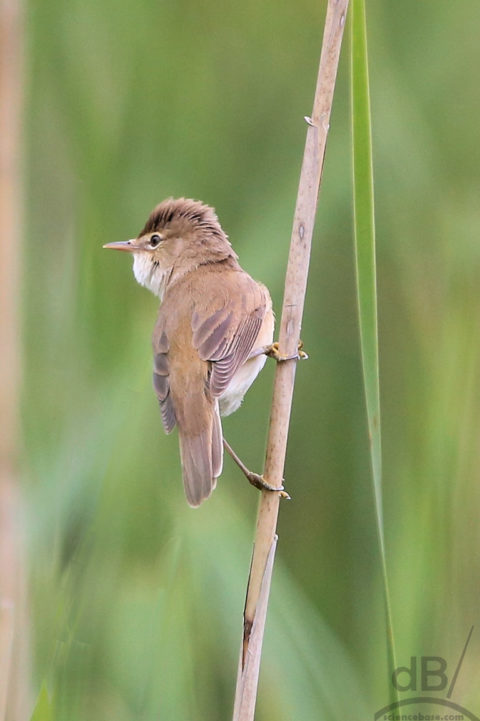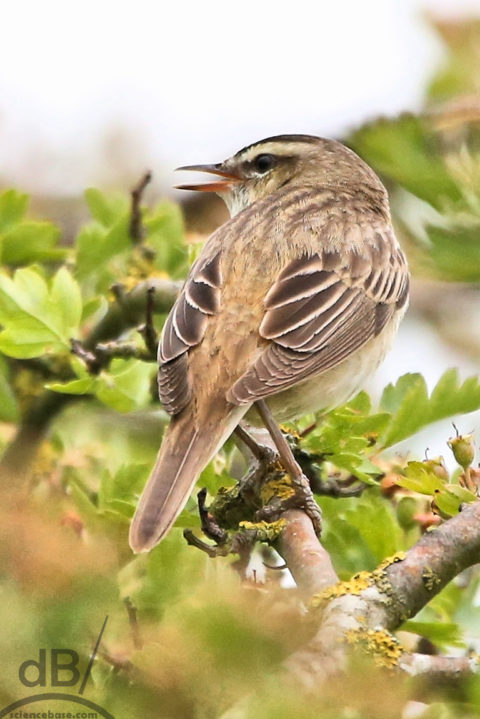I suppose it was obvious in hindsight, it was RSPB Fen Drayton Lakes, there were reeds, there was warbling, it was a reed warbler (Acrocephalus scirpaceus). Despite his whitethroat and white rings around the eyes, he’s simply not a whitethroat (Sylvia communis). He wasn’t singing the whitethroat tune either.

Bird expert and friend Brian Stone explains: “Subtle but distinctive, the head shape is typical of the Acrocephalus warblers. Rather pointy with a steep forehead. That genus also tends to be very uniform in colour and many species are extremely difficult to separate if not singing. Fortunately we only have two really common species here and sedge warbler looks rather different.
Indeed, I had seen and identified positively sedge warbler recently at RSBP North Warren on the outskirts of Aldeburgh, north on the way to Thorpeness, and had seen said sedge warbler again not a few paces from the reed warbler.  Brian tells me: “Much more streaky and with a very bold face pattern. Reed Warbler goes much more for the no-nonsense brown on top, pale buff underneath approach.”
